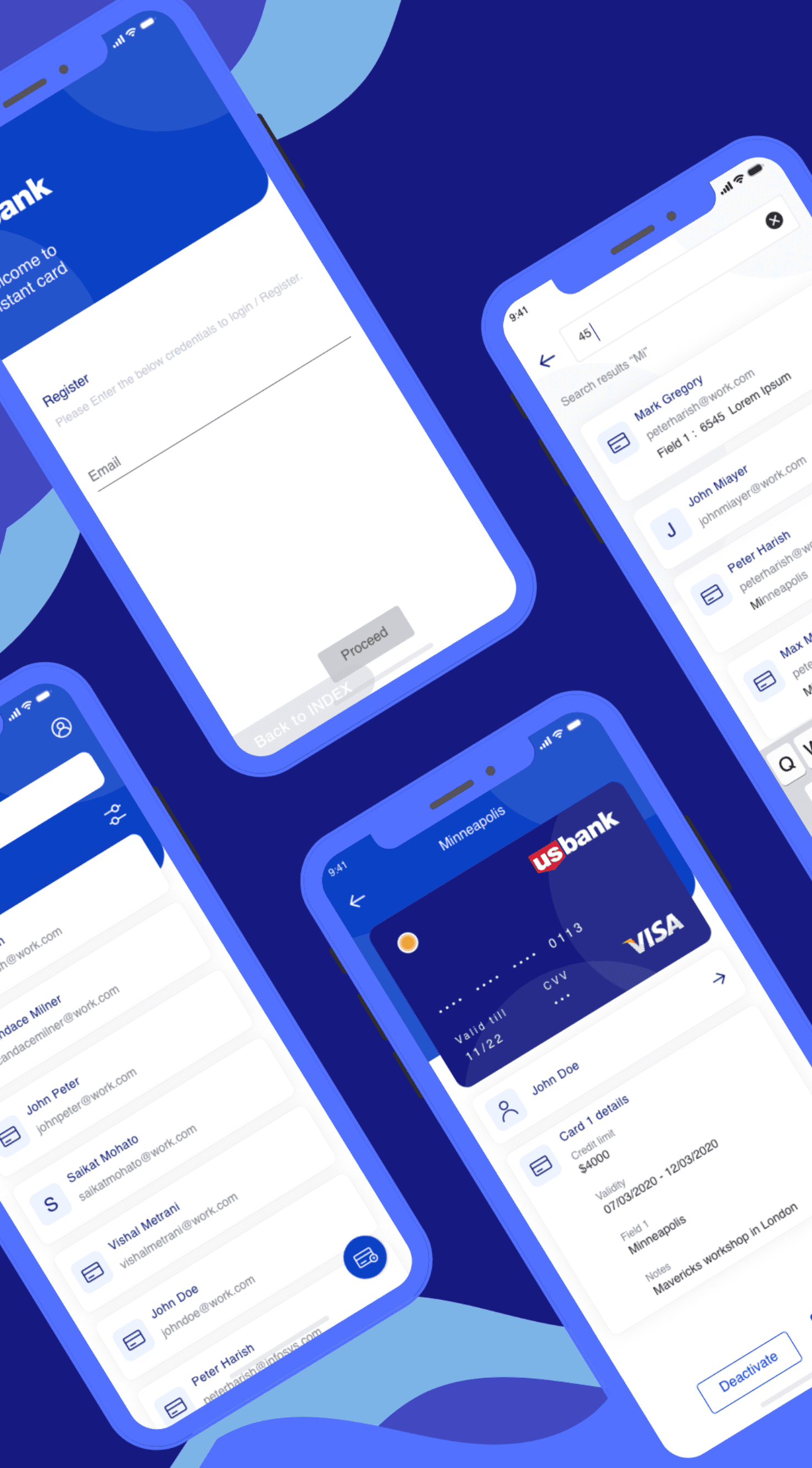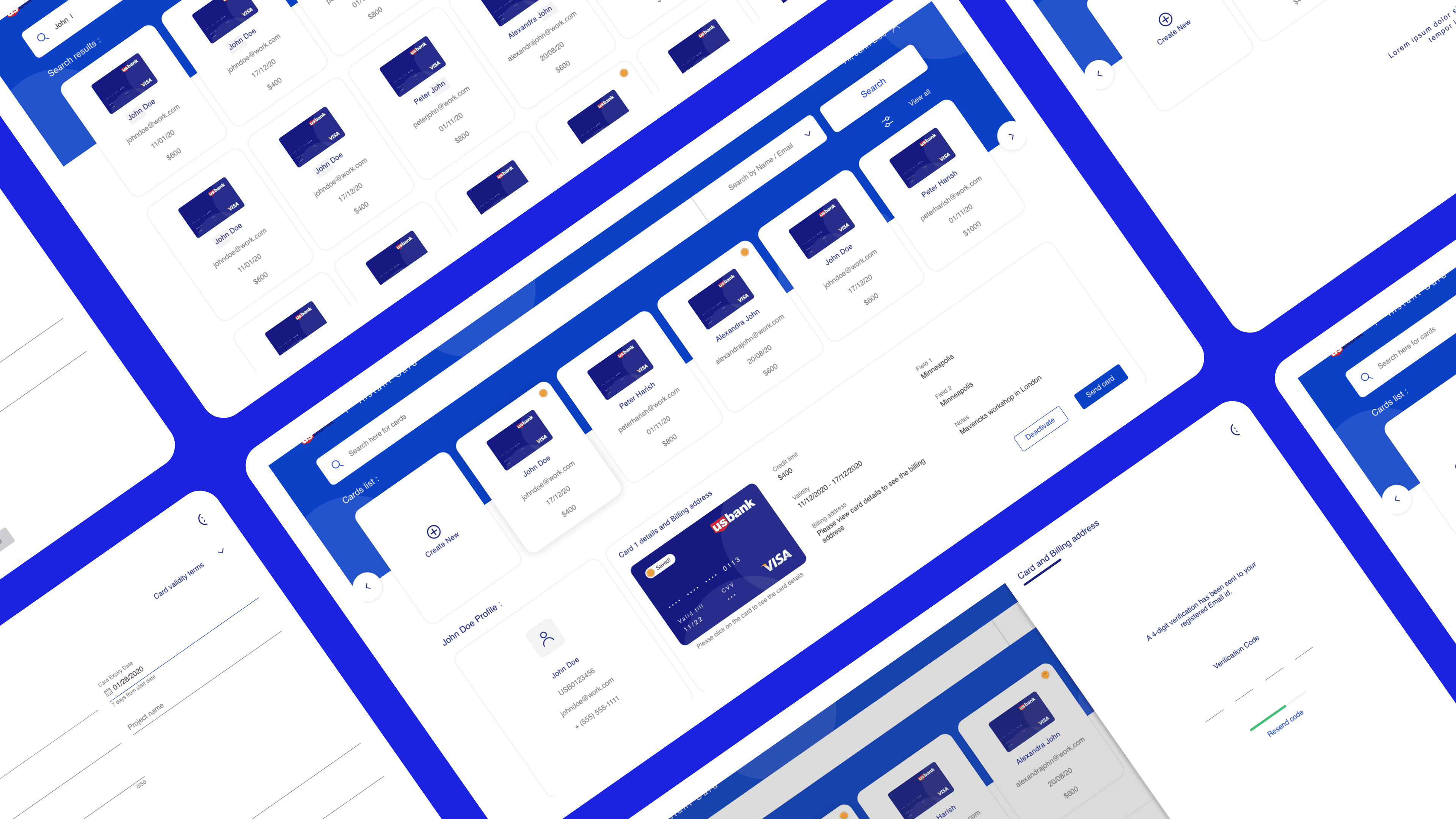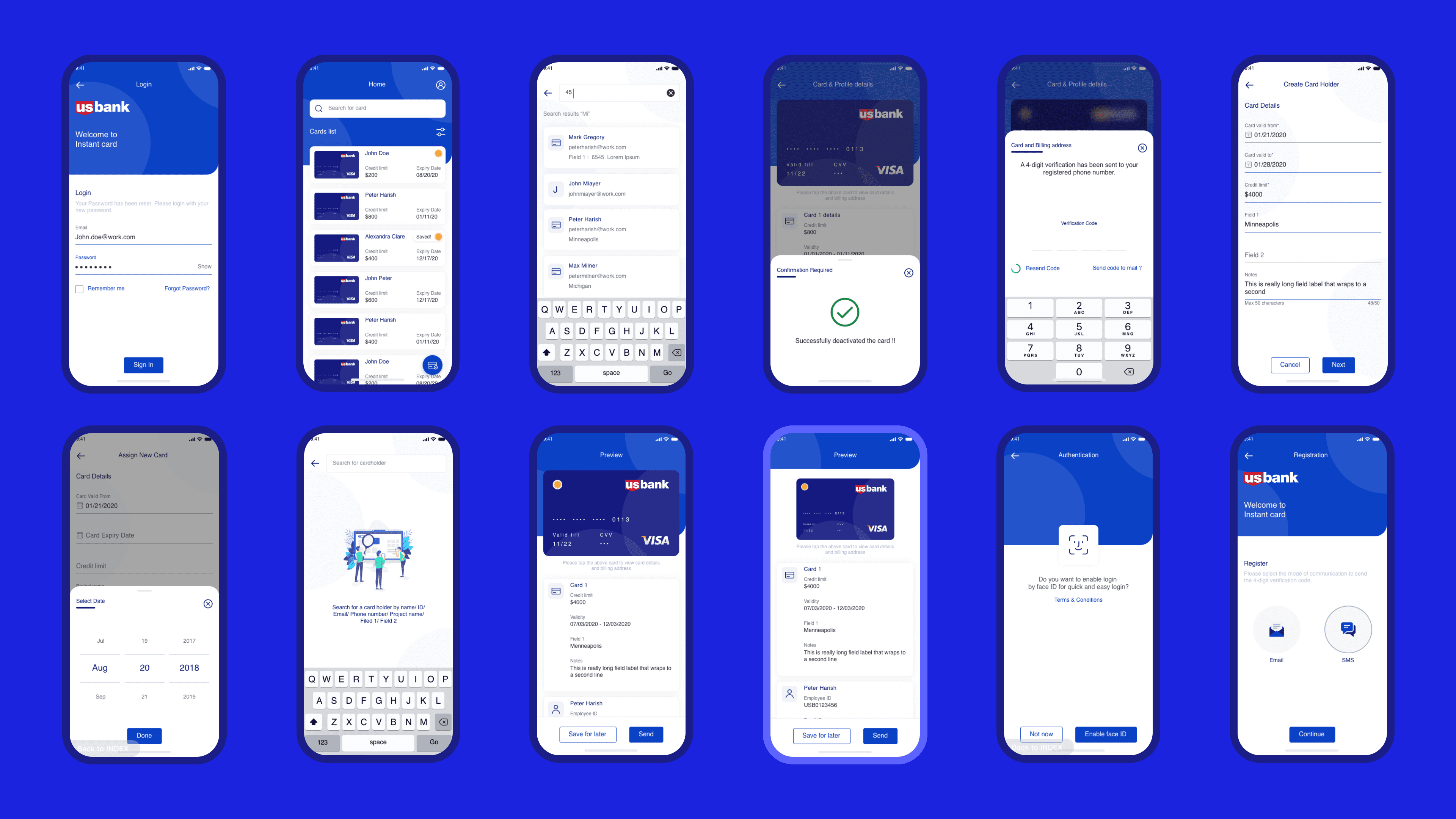Instant Card
Project Summary
Instant Card is designed for the internal employees of US Bank to manage and use cards for official purposes efficiently. This web and mobile application streamlines the issuance, usage, and management of corporate cards, ensuring seamless and secure transactions for various official expenses.
Timeline
November 2020 - April 2021
My Role
Lead Designer for End-to-End Application Design and Prototyping.
Team Size
1
The Problem
Employees, whether current or new, often need temporary cards for official use during travel or for specific projects. There was a pressing need to develop a streamlined process for creating, managing, and maintaining these cards within a cohesive system.

Objective
The primary goal was to create a responsive web platform, complemented by a mobile application, to facilitate easy management of corporate cards. The solution needed to be intuitive, secure, and efficient to enhance the user experience.
Challenges & Limitations
Remote Development : The project was managed from India, which posed challenges in direct access to US Bank’s users.
Constraints : The client was cautious about sharing detailed information, making it difficult to gather comprehensive requirements.
Requirements : The project’s scope and requirements were not well-defined initially, with frequent changes in the requirement criteria based on each iteration.

Empowering efficiency through
a seamless web-mobile card management solution
Key Features
Card Application and Approval Process: New recruits can seamlessly apply for a corporate card through the platform. Managers have the authority to review and approve or deny these applications based on organizational criteria. Additionally, managers can proactively create and assign cards to specific projects or individual employees, ensuring that the right resources are allocated efficiently.
Seamless User Interface: Both the web and mobile applications boast a user-friendly interface, designed to make card management intuitive and effortless. Employees can easily navigate the platform to handle their card-related tasks without requiring extensive training or support.
Enhanced Privacy and Security: The system prioritizes privacy and security in all card management activities. Sensitive card details are accessible only after a secure verification process, which includes sending and receiving a one-time password (OTP) to the registered mobile number. This ensures that only authorized users can view and manage card information, maintaining strict confidentiality.
Flexible Card Distribution: Managers have the flexibility to create corporate cards at their convenience and distribute them to individual users as needed. This feature allows for timely and efficient allocation of cards, ensuring that employees have access to the resources they need without unnecessary delays.

Mobile Responsive Design
Ensuring seamless performance across all devices and screen sizes by developing a mobile-responsive web application, delivering a consistent and accessible user experience on both desktop and mobile platforms.
Next Steps & Future Scope
User Interviews and Data Collection: The initial phase of the project coincided with the first phase of COVID-19, resulting in limited access to users. Conducting comprehensive interviews with actual users and collecting relevant data will be crucial for gaining insights into their experiences and needs, which will help in refining and enhancing the product.
Client Information and Resource Acquisition: Obtaining more detailed information and resources from the client will be essential. This includes understanding their specific requirements and constraints more clearly. Post-launch, iterating the product based on feedback from actual user testing will ensure that the platform meets user expectations and functions optimally in real-world scenarios.
Continuous Improvement: Regular updates and improvements based on user feedback and evolving business needs will help keep the platform relevant and efficient. This includes adding new features, enhancing security measures, and optimizing the user interface based on real user interactions.
Scalability and Performance Optimization: As the user base grows, ensuring that the platform scales efficiently without compromising performance will be critical. Continuous monitoring and optimization will be necessary to maintain a seamless user experience.